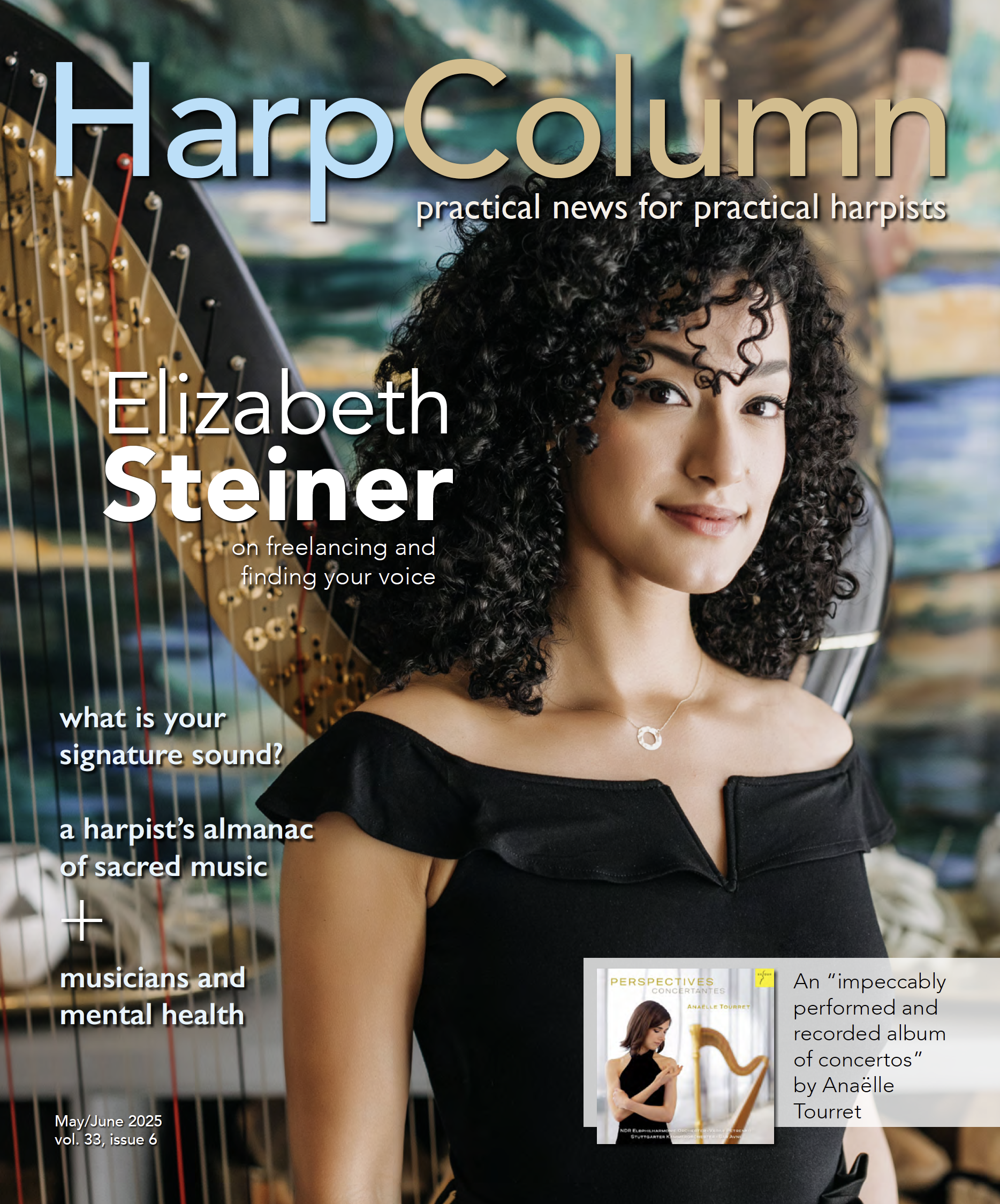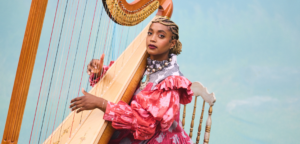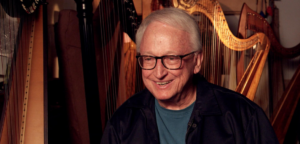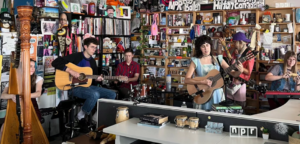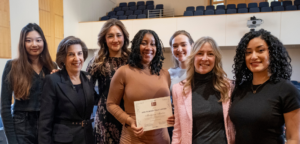New York-based harpist Margot Sergent and her trio, So French Cabaret, performed for the third time at Birdland Jazz Club this summer. Sergent’s show, featuring harp and vocals, blends Edith Piaf classics with trad jazz. We caught up with Sergent to find out more about her project.
Tell us a little bit about your show and the other musicians in your trio, So French Cabaret.
The Edith Piaf experience is an immersive show that presents the roots and legacy of the French Parisian Cabaret, which had its golden years between the ’20s and ’40s. [The concept of the show is] between a musical performance and a musical theater one, as I am not only presenting the songs or playing them, but I am also enacting some of the key moments of Edith Piaf’s life.
The band is composed of a rhythm section, guitar, upright bass, and a harp. I am singing and accompanying myself on the harp. I have been playing with these musicians in New York for the past seven years, in residencies up to five performances a week. We bring on stage the connection built through all these years, and a sound that has had time to mature. Pat Brennan on guitar and Alec Safy on bass are seasoned jazz musicians, and some of the most requested jazz musicians in the New York music scene at this time. I feel extremely privileged to have developed my harp language by their side through the years.
How did your trio have the opportunity to perform at Birdland Jazz Club?
A bass player who regularly plays at Birdland offered to get in touch with the manager of the club. He loved the idea, and I was booked for the first time pre-pandemic. The show was an instant success, and I have been programmed regularly since. Our next show will be Feb. 16th, 2023, at 8:30 p.m.
How did your interest in Parisian cabaret music begin?
My uncle was a New Yorker, and put Sinatra in my blood since I was barely walking. But my nuclear family had a better consideration for classical music, and I was enrolled in many classes from the early age of 4, starting harp and piano at 7.
I was performing as a soloist and in orchestras. I was doing my job right, and enjoying it, but not as much as other colleagues. Then I was invited to be a part of a world music tour with the singer Monica Passos, who was under the label of [jazz saxophonist] Archie Shepp, so I [was able to] meet him and perform with him on stage as he was a guest. Later I was invited to compose and be a part of the arrangement team on the tour of the top-selling artist Nolwen Leroy. [Through these experiences], I discovered my passion for jazz, songwriting, and singing along with the harp.
My first gigs in Paris were with a jazz teacher whose parents owned a cabaret. I finally found my voice and purpose. [I could imagine myself attending] a solid jazz school to start my project as the main artist, and not as a side man anymore. I attended Berklee in 2013. I relocated to New York under an Artist Visa O-1 in 2015, and have been performing there since.
What drew you to Edith Piaf’s classics?
Even though I was working in New York for the love of jazz, and mostly performing American jazz classics, it would happen very often that a member of the audience would ask me to perform “La vie en rose.” I was a little nervous to ask such seasoned jazz colleagues to join me for a French Classics program, but they loved it, and the French classics-trad jazz fusion started!
I was not into Piaf repertoire until I got rid of the cliché I had in mind about her. If I was only [basing my opinion on] the original arrangements of her “Hit,” I thought she must have been a dramatic, difficult, diva type of person. Through my deep research in order to make the sets, I discovered Piaf was the opposite: a caring, bubbling, energetic, resilient personality. It seems to me Edith Piaf [fits in] tremendously well with jazz, not only because she was [collaborating with] the great jazz French composers like Trenet and Aznavour, but also because she was improvising in her own life, and was the voice for telling the story of the people, the invisible.
It seems to me she was portraying the extraordinary in people’s lives, people who were considered by society as “ordinary.” From what I have experienced so far, I found the songs that go the deepest to the soul are jazz songs. And therefore, I found a complete match with Piaf repertoire.
Could you share what you see as the essence of Edith Piaf’s musical style?
It’s a storytelling, supported by music, to get deeper to the core of the story.
[Once a journalist asked her], “When you sing, do you sing better when you’re in love?” She answered, in a laugh: “I’m always in love, you know? I don’t recall ever not having been in love. A song must exalt love; yes, I think that when you don’t take love seriously, you’re not much in life.”
The essence of Piaf’s musical style is the perfect balance between the melodic lines and groove; a collection of the deepest expressions of love, from friendship, the most joyful romantic love, to the most dramatic loss of the other half. She painted the complexity of humanity with empathy and elegance, through words, melodies, and chord progressions.
How did you decide to meld trad jazz with Piaf’s music? What elements of trad jazz do you incorporate in your shows?
There is a contagious joie de vivre in swing; I wanted to share the bubbling and uplifting Piaf energy through swing arrangements for the up tempo [songs]. I bring more nuanced colors in the ballads, through soulful jazz harmony, and voicings that enhance the poetry of the lyrics.
Piaf had the best years of her life in New York. I wanted to think of this show as a tribute to the bliss she experienced there, and keep telling the human stories she decided to support.
Learn more about Sergent and her group on her website.




